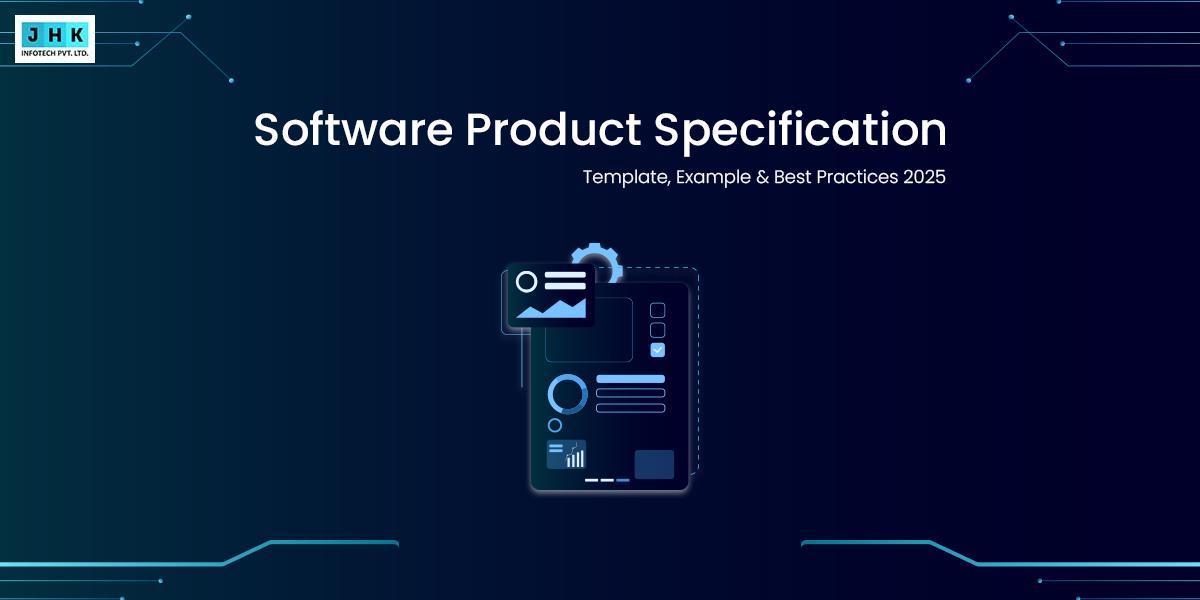Exploring Biometrics: The Science Behind Identification and Authentication

Biometrics utilizes distinct physical or behavioral traits to accurately identify individuals. These traits, like fingerprints, facial features, or iris patterns,are hard to fake, enhancing the security of biometric systems. Biometrics is utilized for access control, identity verification, and authentication in various sectors including security, law enforcement, healthcare, and finance. Biometrics provides superior security, convenience, and accuracy in contrast to traditional approaches such as passwords or ID cards. However, it also raises concerns about privacy, security risks, and ethical considerations. Overall, biometrics play a crucial role in modern identity management and authentication systems.
DEFINITION OF BIOMETRICS
Biometrics is the science of analyzing and measuring unique physical or behavioral characteristics of individuals for identification or authentication. It involves the use of biological traits, such as fingerprints, facial features, iris patterns, voice patterns, and even gait, to verify a person’s identity.
Type of Biometrics
1. Fingerprint Recognition: Analyzes the unique patterns of ridges and valleys on a person’s fingertip.
2. Facial Recognition: Identifies individuals by analyzing their facial features, such as the distance between eyes or the shape of the nose.
3. Iris Recognition: Scans and analyzes the unique patterns in the colored part of the eye (the iris).
4. Voice Recognition: Analyze an individual’s voice patterns, including pitch, tone, and speech patterns.
5. Retina Scanning: Captures the unique patterns of blood vessels in the back of the eye (the retina).
6. Hand Geometry Recognition: Measures and analyzes the shape and size of an individual’s hand.
7. Vein Pattern Recognition: Analyzes the patterns of veins in an individual’s hand or finger.
8. Gait Recognition: Analyzes an individual’s walking pattern.
How Does Biometrics Work?
Biometric systems capture and analyze these unique characteristics to create biometric templates, which are essentially digital representations of an individual’s biometric data. During authentication, the system compares the biometric template of the person trying to access a system or location with stored templates to verify their identity.
Application of Biometrics
1. Access Control: Biometric systems are extensively used for access control in buildings, data centers, and secure areas within organizations. Fingerprint, facial recognition, or iris scanning can replace traditional key cards or PINs, enhancing security and preventing unauthorized access.
2. Border Security and Immigration: Biometric technologies such as facial recognition and fingerprint scanning are employed at borders and immigration checkpoints for identity verification and border control. These systems help enhance security by accurately identifying travelers and detecting individuals with fraudulent documents.
3. Law Enforcement and Forensics: Law enforcement agencies use biometrics, particularly fingerprint analysis, to identify suspects and solve crimes. Biometric databases help match fingerprints found at crime scenes with those in criminal databases, aiding investigations and criminal identification.
4. Identity Verification: Biometrics is used in identity verification processes for various purposes, including opening bank accounts, accessing government services, and registering for social benefits. Facial recognition, iris scanning, and fingerprinting are commonly employed for secure and accurate identity verification.
5. Time and Attendance Tracking: Biometric systems are utilized in workplaces for time and attendance tracking of employees. Employees can clock in and out using their fingerprints or other biometric traits, eliminating the possibility of time theft or buddy punching.
6. Mobile Device Security: Many smartphones and tablets incorporate biometric authentication methods such as fingerprint scanning, facial recognition, or iris scanning to unlock devices and secure sensitive information. Biometrics enhances device security and provides a convenient and user-friendly authentication experience.
Privacy Concerns
- Invasive Nature: Biometric data, such as fingerprints, facial features, or iris patterns, is inherently personal and can reveal intimate details about individuals. The collection and use of biometric data can feel invasive to individuals, especially if they are unaware of how their data is being collected, stored, or used.
- Risk of Misuse: Biometric data, once compromised, cannot be changed like passwords or PINs. Any breach or unauthorized access to biometric databases can have severe consequences, including identity theft, financial fraud, and privacy violations. There’s a risk that biometric data collected for one purpose may be misused or repurposed for other applications without individuals’ consent.
- Surveillance and Tracking: The deployment of biometric systems, particularly facial recognition technology, raises concerns about mass surveillance and constant tracking of individuals in public spaces. Widespread surveillance using biometrics can erode individuals’ privacy and lead to chilling effects on freedom of expression and association.
- Biometric Databases: The creation of centralized biometric databases raises concerns about the security and integrity of biometric data. Centralized repositories of biometric information can become targets for hackers and malicious actors seeking to exploit sensitive personal information for nefarious purposes.
- Lack of Transparency: Individuals may not always be fully informed about the collection, storage, and use of their biometric data. Lack of transparency and consent mechanisms can undermine individuals’ rights to control their personal information and make informed decisions about their privacy.
Discrimination Concerns
- Bias in Algorithms: Biometric systems, particularly those based on facial recognition or voice recognition, can exhibit bias and inaccuracies, especially against certain demographic groups. This bias can result from inadequate representation of diverse populations in training datasets or inherent biases in algorithm design.
- False Positives and Negatives: Biometric systems may produce false positives (incorrectly matching an individual to someone else) or false negatives (failing to recognize an individual’s identity). These errors can disproportionately affect certain demographic groups, leading to discrimination and unfair treatment.
- Surveillance and Policing: The use of biometric technologies in law enforcement and surveillance can disproportionately impact marginalized communities. There’s a risk of over-policing and targeting of specific groups based on biased interpretations of biometric data.
- Employment and Access: Biometric systems used for employment screening or access control may inadvertently discriminate against individuals with certain physical characteristics or disabilities that affect biometric measurements, such as fingerprint or facial recognition.
Biometric Functionality
1. Capture: Biometric systems capture biometric data from individuals using specialized sensors or devices. The type of biometric data captured depends on the specific modality being used, such as fingerprints, facial features, iris patterns, voice patterns, or hand geometry.
2. Processing: Once biometric data is captured, it is processed to extract relevant features and create a digital representation known as a biometric template. This template is a mathematical representation of the unique characteristics of an individual’s biometric trait.
3. Storage: Biometric templates are stored securely in databases or on devices for later comparison and matching. It’s crucial to ensure that biometric data is encrypted and protected against unauthorized access to safeguard individuals’ privacy and security.
4. Comparison and Matching: During authentication or identification, the biometric template of the individual presenting their biometric trait is compared against stored templates in the database. The system calculates a similarity score or distance measure to determine whether the presented biometric data matches any of the stored templates.
5. Decision-Making: Based on the comparison results, the biometric system decides the identity of the individual. In authentication scenarios, the system either accepts or rejects the individual’s claimed identity based on the similarity score and predefined threshold.
6. Feedback: Biometric systems provide feedback to users regarding the outcome of the authentication or identification process. This feedback may include visual or auditory cues indicating whether the individual’s biometric trait was successfully recognized or matched.
7. Integration: Biometric functionality can be integrated into various applications and systems, including access control systems, time and attendance tracking systems, mobile devices, and online platforms. Integration involves connecting biometric hardware and software components with existing infrastructure to enable biometric authentication or identification.
8. Adaptation and Improvement: Biometric systems may incorporate adaptive algorithms that learn and improve over time based on feedback and new data. This allows the system to adapt to changes in biometric traits due to factors like aging or injury and improve accuracy and performance over time.
Conclusion
In conclusion, biometrics represents a transformative approach to identity verification and authentication, offering a highly secure and convenient method for confirming individuals’ identities based on unique physical or behavioral characteristics. From fingerprint recognition to facial and iris scanning, biometric technologies have revolutionized various sectors, including security, law enforcement, healthcare, finance, and more.
The widespread adoption of biometrics has significantly enhanced security measures, providing robust protection against identity theft, unauthorized access, and fraud. Moreover, biometric systems offer unparalleled convenience, replacing traditional authentication methods such as passwords or ID cards with seamless and user-friendly interactions.
However, alongside its many benefits, biometrics also presents challenges and concerns, particularly regarding privacy, security risks, and potential discrimination. Safeguarding biometric data against unauthorized access and misuse is paramount to ensuring individuals’ privacy and preventing data breaches. Additionally, addressing biases and inaccuracies in biometric algorithms is essential to mitigate the risk of discrimination and ensure fair treatment for all individuals.
Despite these challenges, the continued advancement and responsible implementation of biometric technologies hold immense promise for shaping a more secure, efficient, and inclusive future. By prioritizing privacy protection, transparency, and ethical considerations, we can harness the power of biometrics to build trusted and resilient systems that empower individuals while safeguarding their rights and dignity.









